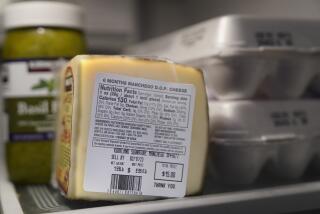Ridding the state of foam
- Share via
The rap on polystyrene foam — better known by the trade name Styrofoam — used to be that it hung around in landfills without decomposing and couldn’t be recycled. But these days, practically nothing breaks down in landfills because they are regularly compacted and covered. And the foam now can be recycled in dozens of California cities, though many of them offer only limited service.
So has the foam cup become an upstanding citizen in a more green-conscious world? Not quite. It’s been fingered as one of the major culprits, along with plastic carryout bags, of plastic pollution in the oceans and other waters. It’s difficult to screen foam out of the runoff that enters the ocean because the material breaks easily into ever-tinier pieces, according to the California Coastal Commission. Until recently, the state has left cities to patch together a piecemeal effort to address the problem. But now, legislation is scheduled to reach the state Senate floor Tuesday that would ban foam in much of California. The bill would be a big step forward in many ways, but it should be amended to allow a more gradual shift.
Coastal cities face new storm water regulations that require them to reduce the amount of plastic trash in the ocean. As a result, 50 municipalities have banned or restricted the use of foam food containers — the coffee cups and ubiquitous hinged “clamshell” boxes used for takeout — requiring restaurants and groceries to use either biodegradable or easily recyclable substitutes such as hard plastics or aluminum. Biodegradable containers, such as cardboard or fiber boxes, cost about 50% more, a few cents per container.
The bans appear to help. San Francisco found that within a single year, the amount of foam litter had been reduced by more than a third; what remained came mostly from other sources, such as packing materials. Despite concerns before they were put in place, the bans haven’t caused the closure of restaurants or noticeably higher prices for takeout food. McDonald’s, a bastion of low-priced food, led the way back in 1990, when it worked with the Environmental Defense Fund to overhaul its food packaging. Though the company still uses foam cups for hot beverages, paper wrapping and cardboard boxes replaced the old foam containers.
SB 568, by Sen. Alan Lowenthal (D-Long Beach), would extend the foam container ban statewide starting in 2014, except in jurisdictions that meet certain levels of recycling for the material. School districts would get an extra year. Los Angeles Unified alone serves 650,000 lunches a day, using a mix of foam and biodegradable trays.
Too quick a ban could keep recycling efforts, which the industry supports, from getting off the ground. The bill should be amended to give cities and businesses more time to beef up their recycling efforts before instituting the ban. And then it should be passed. The impact on eateries and consumers is tiny, while the cleanup of plastic ocean trash is imperative.
More to Read
A cure for the common opinion
Get thought-provoking perspectives with our weekly newsletter.
You may occasionally receive promotional content from the Los Angeles Times.










